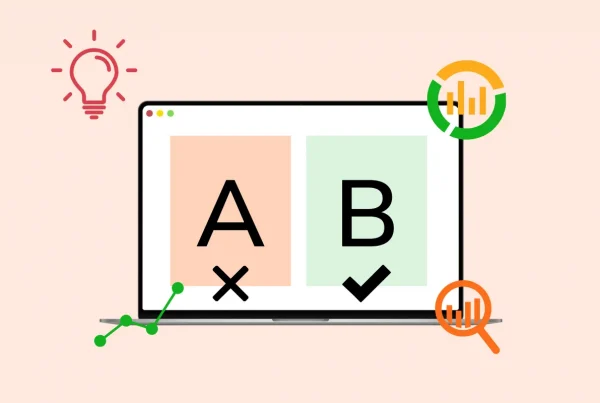Blog article
How Many Web Pages Should an E-commerce Website Have?
Estimated reading time: 7 minutes

Is it time to revamp your e-commerce website? Or maybe you’re starting from scratch. Either way, you’ve got a lot of quick decisions to make.
As you start designing your new eCommerce website, you’ll come up against a lot of questions. One of them, inevitably, will be: “How many web pages should my website have, anyway?”
Below, we discuss some guidelines when it comes to the number of web pages you should have. We also give you some tips on some must-have pages for every site.
How many pages should my e-commerce website have?
Okay, we should start by saying that there’s no simple answer to this question—there isn’t one magic number.
Yes, creating more web pages on your e-commerce site will increase the odds that search engine crawlers will find and index your site. But you shouldn’t overwhelm human users with a wall of fluff-filled text. Search engines are just trying to mimic the human experience, after all. And your human users want simple, streamlined pages that quickly answer their questions. By creating a page for each users’ search intent, it’s also a boon to your SEO.
So, when it comes down to it, the number of web pages on your e-commerce website should be determined by quality, user experience, and your business setup. For example, a specialized e-commerce website for bespoke suits would have fewer pages because its products are more limited. On the flip side, a more generic e-commerce site that sells everything from appliances to clothing, like Walmart, would have significantly more pages.
To strike the right balance between intent and webpages:
- Put yourself in the users’ shoes: Conduct vigorous user testing during the design phase to see how many pages are right for your users.
- Write unique copy: Even if you’re using a template, every page has to be different. Otherwise, you risk a duplicate content penalty. In the world of e-commerce, you don’t want to create too many pages with similar products, either. If you’re taking this approach, you can determine the number of total pages by how many products you have, provided the products are unique from each other.
- Keep it simple: SEO makes it tempting to add more and more pages to your site, but don’t get carried away. Every page needs to deliver value to human readers.
The following guidelines should help you figure out the best number of pages for your site, but keep in mind that the “right” number of pages differs for every business.
What pages should my website have?
Not sure what pages your website should have? Here are our top six must-haves for e-commerce websites.
1. Home
Your home page is the first thing shoppers see. Try to put your most compelling content above the fold so users don’t have to scroll for information.
Your homepage should show:
- Who you are
- What you do
- Who you help/the problem you solve
- How you help
The goal is to create a homepage that loads fast and captures users’ attention. When in doubt, keep it simple and clean. You can always link to other main pages, like your main category pages, from the homepage to direct traffic flow.
2. About
Did you know that 52% of new website users look for your About page? This is a must for any business in any industry. Depending on the nature of your business, this page should include:
- Company history
- Your brand values
- Delivery policy
This is your chance to show you’re a legitimate, credible authority in your industry, so always include an in-depth About page. Follow Google’s EAT (expertise, authoritativeness, and trustworthiness) guidelines while writing your About page. The more you can communicate your expertise in your industry, the more likely both users and search engines will be to trust your content.
3. Products or Services
How can customers interact with your business? Your Products or Services page gives users an overview of what you offer. As an eCommerce business, your Product pages have the biggest impact on the total number of pages on your website.
While some businesses can get away with just one page for all of their offerings, some brands might need to separate each product or service into a subpage. If that’s the case, treat your main page as a concise summary of what you offer, breaking your offerings into easy-to-understand categories.
Category and Product Detail pages
If you have a wide range of e-commerce products or services, you’ll need a hierarchy to properly categorize everything you offer. Try creating a category page for similar products, and then having a product detail page for each product. For example, you could create a category page just for shoes, then link to all of your shoe products as separate product detail pages. The more categories and products you have, the greater the number of pages on your e-commerce site.
So, if you offer 12 categories of products, you’ll have a minimum of 12 category pages. From there, you’ll have a separate product detail page for every offering. If you have just two products per category, you’ll have 24 product detail pages. As you can see, the page numbers add up for e-commerce websites, where the focus should be primarily on what you’re selling.
4. Resources
Your Resources page can be in the form of a blog, podcast, FAQ, social media feed, or knowledge base. The goal is to create a space where you can continually add new, valuable content for users. This not only encourages people to keep coming back to your website, but it also sends frequency signals to search engines.
A blog is particularly helpful for e-commerce brands because it helps you do internal linking and even suggest products to shoppers. But keep in mind that, as you add more content to your blog, you’ll add to the total number of pages on your website. It’s not uncommon for e-commerce websites to have one overall blog page, several category pages, and pages for each piece of blog content.
If you do create a resources section, try to post on it at least once weekly. Before launch, aim to have a minimum of three resources available on the page. This builds your credibility as an e-commerce seller. You don’t want users to see a completely blank resources section when you go live!
5. Privacy policy and terms of service
Under the GDPR, you’re required to provide a privacy notice on any website available to users in the EU. If you’re using a service like Google Analytics, you’ll need a privacy policy, too.
While you don’t need to make these pages highly visible, they still need to be accessible in your website’s footer. And don’t use a generator to create this content: That can put you at risk for duplicate content penalties. As boring as they can be to write, always create these pages from scratch.
6. Contact
Your Contact page will be the simplest page on your website, but it’s still very important. Ditch the heavy paragraphs here—keep the page focused on how users can contact you. Include information such as your:
- Phone number
- Email address
- Social media accounts
- Physical location
.
Leave it to Verbolia
There’s a lot to think about when you’re building or revamping your e-commerce website. Fortunately, you don’t need to agonize over strategizing or building your landing pages. Verbolia creates and optimizes landing pages at scale for e-commerce businesses, targeting SEO keywords and tracking your performance over time.
See the Verbolia difference for yourself: Schedule a personalized demo now.
About The Author
How can Verbolia help your e-commerce platform.


